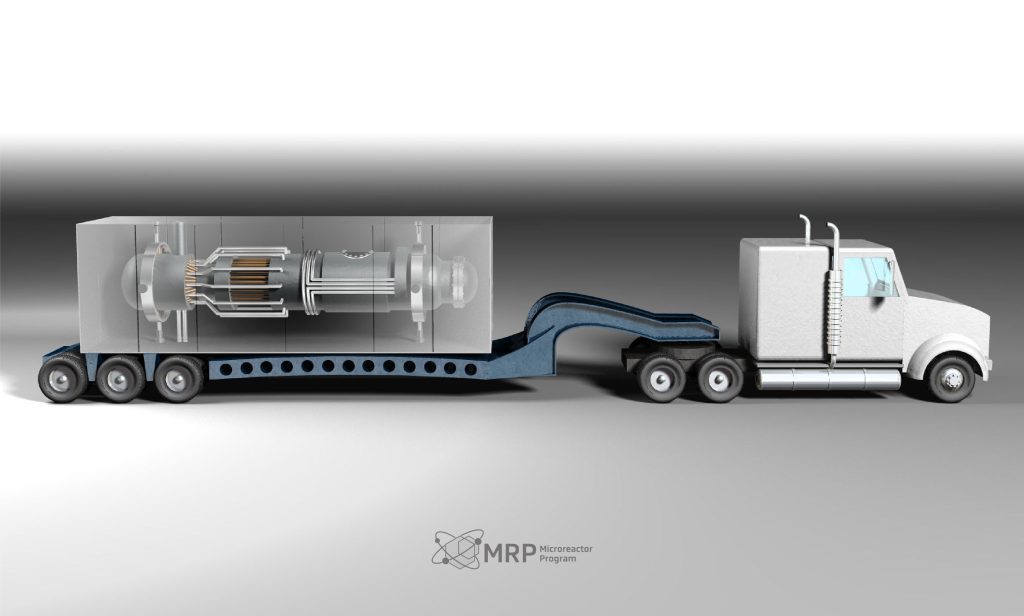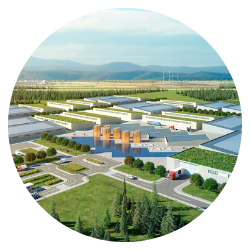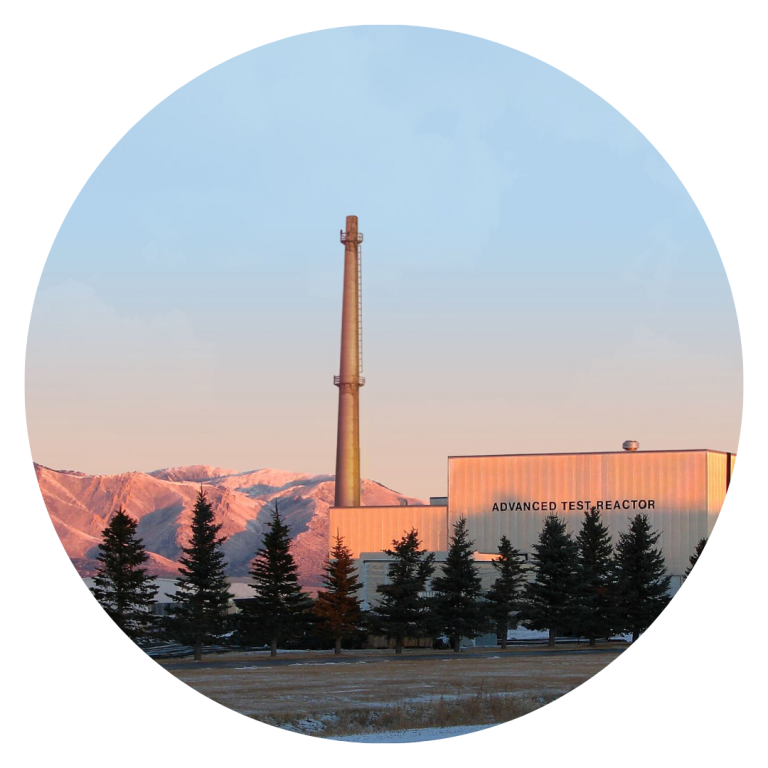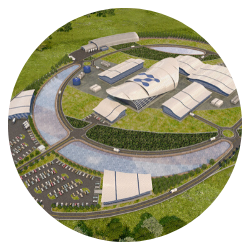Microreactors
What are microreactors?
A microreactor is a small nuclear reactor that can operate as part of the electric grid, independently from the electric grid, or as part of a microgrid to generate up to 20 megawatts thermal energy that can be used to generate electricity and provide heat for industrial applications. Most of these small reactors are designed to be portable – many could be hauled by a semitractor-trailer. Microreactors are 100 to 1,000 times smaller than conventional nuclear reactors, while small modular reactors (SMRs) range from 20 to 300 megawatts.
Microreactors offer a combination of reliability and operational flexibility that no other small generating system can match. They are expected to operate for years without refueling. Renewed interest in these very small reactors is driven by a number of factors, including the need to generate power on a small scale in remote locations, at deployed military installations, and in locations recovering from natural disasters.

The U.S. Department of Defense is pursuing the concept as its military operations become more energy intensive and require portable, dense power sources. Remote, rural communities in the U.S., many of which fly or truck in diesel to run generators, are considering microreactors since they could generate power on-site. Their potential use as sources of industrial process heat opens up potential new markets for zero-carbon energy for desalination, hydrogen production and other industries.
INL is working with developers, private industry, regulators, universities and others to develop, demonstrate, test and validate this new generation of microreactors. As part of its research mission, INL is also helping develop new fuels for microreactor designs, many of which will use low-enriched uranium with higher concentrations of uranium-235 than the fuel used in today’s commercial power reactors.
Why are people excited about microreactors?
- Microreactors can be “right-sized” to location and are easily scalable
- Microreactors can produce more than electricity, including industrial products like hydrogen
- Microreactors have characteristics that enable rapid deployment
- Technology advancements and experience provide improved microreactor designs
- The U.S. advanced reactor industry is developing several microreactor concepts
- The federal government is supporting development through funding and legislation
- INL and the National Reactor Innovation Center (NRIC) are enabling developers by providing technical resources, capabilities and a demonstration site
- A demonstration is foreseen in the next three to five years

What are some characteristics of microreactors?
- Small, non-carbon-emitting sources of electricity and heat
- Fully factory built and installed on-site
- Easily and quickly shipped to and removed from site
- Self-regulating with high degree of safety based on natural laws of physics
- Reliable and resilient sources of demand-driven power
- Easy to operate compared to larger power reactors
- Capable of operating for several years without refueling
- Able to serve a range of energy applications
- Can be integrated with other energy sources in on- and off-grid applications

Who is developing microreactors?
A number of private sector companies have microreactor initiatives.
The Gateway for Accelerated Innovation in Nuclear (GAIN) and Third Way, with the help of the United States Nuclear Infrastructure Council (USNIC), published an Advanced Nuclear Directory that lists developers and suppliers engaged in advanced nuclear energy.
How will INL and NRIC support microreactor demonstrations?
- Existing buildings and green field sites for reactor demonstrations
- Proven record of nuclear facility operations
- Robust capabilities including engineering-scale fuel fabrication and advanced manufacturing facilities
- Utility connections and integrated energy systems testing for reactor demonstrations
- Adjacent world-class nuclear R&D experimental facilities and capabilities to support demonstration needs
- Well-characterized site with a controlled emergency planning zone
- NRC-licensing and DOE-authorization for facilities as appropriate

What are the different types of nuclear reactors?
- Large Power Reactors: Commercial reactors built staring in the 1950s, currently in operation
- Small Modular Reactors: In development with the first reactors expected in 2024
- Microreactors: In development with the first reactors expected in 2025
- Large Advanced Reactors: Currently in operation or under construction outside of the U.S.

